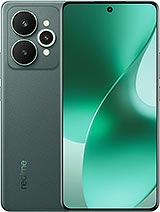iQOO Neo 10R alternatives
Tap above to see alternatives.
Oppo F31 alternatives
Tap above to see alternatives.
iQOO Neo 10R

iQOO Neo 10R
-
Snapdragon 8s Gen 3
4 nm
-
6400 mAh
80W
-
6.78"
1260 x 2800 pixels
-
50 MP
4K@30/60fps
-
Specs

1x3.0 GHz Cortex-X4
4x2.8 GHz Cortex-A720
3x2.0 GHz Cortex-A520
4x2.5 GHz Cortex-A78
4x2.0 GHz Cortex-A55
8GB 256GB (UFS 4.1)
12GB 256GB (UFS 4.1)
8GB 256GB (UFS 3.1)
12GB 256GB (UFS 3.1)
f/1.8, (wide), 1/1.95", 0.8µm, Sony IMX882, PDAF, OIS
8 MP
f/2.2, (ultrawide), 1/4.0", 1.12µm, GalaxyCore GC08A3
f/1.8, (wide), 1/2.88", 1.6µm, OmniVision OV50D40, PDAF, OIS
2 MP
f/2.4, (depth), 1/1.5", 1.75µm
1080p
720p@60/30fps
f/2.5, (wide), 1/3.1", 0.7µm, GalaxyCore GC32E1
f/2.4, (wide), 1/1.3", 1µm, Sony IMX480
1080p
720p@30fps
SIM1: Nano, SIM2: Nano
10 5G bands
n1, n3, n5, n8, n28, n38, n40, n41, n77, n78
10 5G bands
n1, n3, n5, n8, n28, n38, n40, n41, n77, n78
In this performance comparison, the iQOO Neo 10R with its Qualcomm Snapdragon 8s Gen 3 (4nm) performs better than the Oppo F31 with the Mediatek Dimensity 6300 (4nm), thanks to superior chipset efficiency.
iQOO Neo 10R offers 3 years of OS updates, whereas Oppo F31 provides 2 years. For security updates, iQOO Neo 10R offers 4 years of support compared to Oppo F31's 3 years.
Both iQOO Neo 10R and Oppo F31 feature AMOLED displays, offering vibrant colors and deeper blacks. In terms of smoothness, iQOO Neo 10R offers a higher 144 Hz refresh rate, ensuring fluid scrolling and animations. iQOO Neo 10R also boasts a brighter screen with 4500 nits of peak brightness, enhancing outdoor visibility. Notably, iQOO Neo 10R offers a higher screen resolution, resulting in sharper visuals and more detailed content.
Oppo F31 features a larger 7000 mAh battery, potentially delivering better battery life. Both devices support the same wired charging speed of 80W.
Oppo F31 offers better protection against water and dust with an IP69 rating.
- iQOO Neo 10R – Check price here
- Oppo F31 – Check price here
¹ Scores can vary even with the same chipset due to RAM, thermals, and software optimization.











